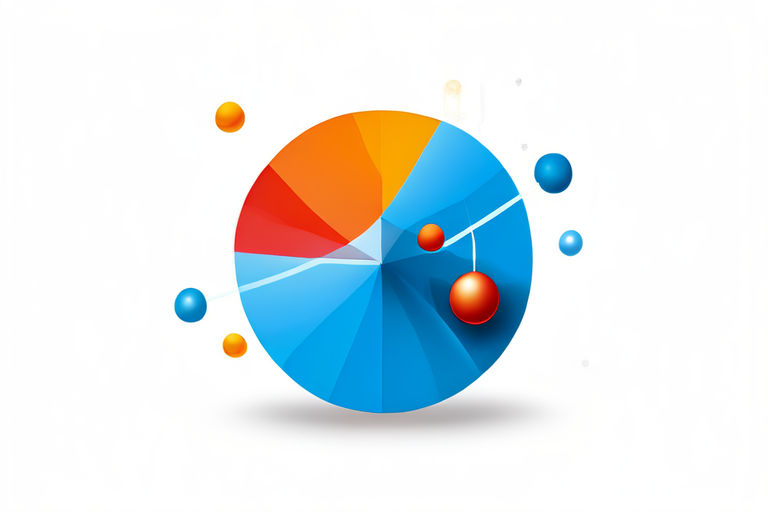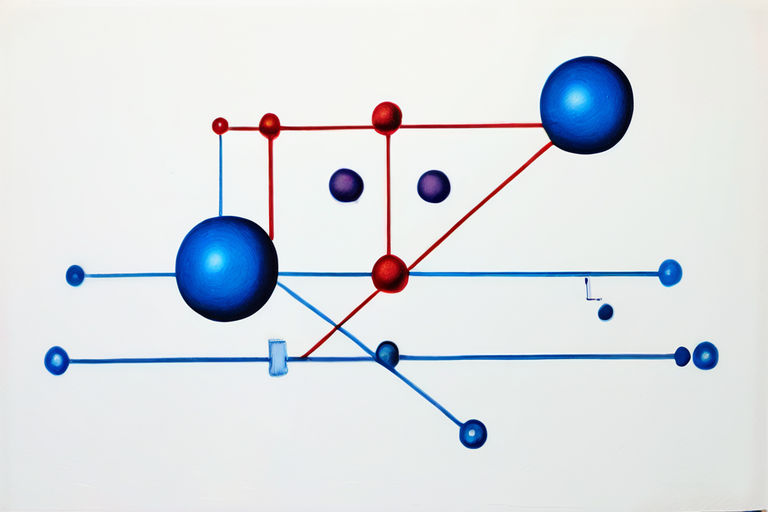- Introduction
- Fundamental Concepts
- Mathematical Representation
- Impulse-Momentum Theorem
- Types and Categories
- Real-World Applications
- Experimental Determination
- Impulse in Collisions
- Impulse in Rotational Motion
- Advanced Topics
- Challenges and Misconceptions
- Impulse in Sports
- Impulse in Engineering
- Impulse in Nature
- FAQs
- Conclusion
Introduction
Definition of Impulse in Physics
Impulse in physics is defined as the product of the average force applied to an object and the time interval over which it is applied. Mathematically, it is expressed as 𝐽=𝐹Δ𝑡J=FΔt, where 𝐽J represents impulse, 𝐹F is the force, and Δ𝑡Δt is the time interval. Impulse quantifies the change in momentum of an object, providing a crucial link between force and motion.
Historical Background and Development of the Concept
The concept of impulse has its roots in classical mechanics, pioneered by Sir Isaac Newton in the 17th century. Newton’s second law of motion laid the foundation for understanding how forces affect the motion of objects, leading to the formalization of impulse. Over time, the concept has been refined and expanded to encompass various applications in modern physics and engineering.
Importance and Relevance in Modern Physics
Impulse is fundamental in understanding interactions in mechanics, from the collision of particles to the motion of celestial bodies. It plays a vital role in analyzing forces in sports, designing safety mechanisms in vehicles, and even in the propulsion systems of spacecraft. Understanding impulse helps in optimizing performance and safety across various domains.
Fundamental Concepts
Momentum
Momentum is a measure of the quantity of motion an object possesses and is defined as the product of an object’s mass and velocity (𝑝=𝑚𝑣p=mv). It is a vector quantity, meaning it has both magnitude and direction.
Force
Force is an interaction that changes the motion of an object. It can cause an object to accelerate, decelerate, remain in place, or change direction. Force is measured in newtons (N) and is also a vector quantity.
Time Interval
The time interval refers to the duration over which a force is applied to an object. It is crucial in calculating impulse since the effect of a force depends on how long it is applied.
Newton’s Second Law of Motion
Newton’s second law states that the force acting on an object is equal to the rate of change of its momentum (𝐹=𝑑𝑝𝑑𝑡F=dtdp). This law forms the basis for deriving the impulse-momentum relationship.
Relationship Between Impulse and Momentum
Impulse is directly related to the change in momentum of an object. The impulse-momentum theorem states that the impulse on an object is equal to the change in its momentum (𝐽=Δ𝑝J=Δp). This relationship is essential for solving problems involving collisions and other interactions in physics.
Mathematical Representation
Impulse Formula
The formula for impulse is given by: 𝐽=𝐹Δ𝑡J=FΔt where 𝐽J is the impulse, 𝐹F is the average force applied, and Δ𝑡Δt is the time duration over which the force is applied.
Units of Measurement
Impulse is measured in newton-seconds (Ns) in the SI system. Since it is the product of force (newtons) and time (seconds), it combines these two fundamental units.
Dimensional Analysis
The dimensional formula for impulse is [𝑀𝐿𝑇−1][MLT−1], which can be derived from the dimensions of force ([𝑀𝐿𝑇−2][MLT−2]) and time ([𝑇][T]).
Vector Nature of Impulse
Impulse, like force and momentum, is a vector quantity. This means it has both magnitude and direction, which must be considered when analyzing physical situations involving impulse.
Impulse-Momentum Theorem
Explanation of the Theorem
The impulse-momentum theorem states that the impulse on an object is equal to the change in its momentum. This theorem is crucial for understanding how forces affect the motion of objects over time.
Mathematical Derivation
Starting from Newton’s second law: 𝐹=𝑑𝑝𝑑𝑡F=dtdp Multiplying both sides by 𝑑𝑡dt, we get: 𝐹 𝑑𝑡=𝑑𝑝Fdt=dp Integrating both sides over the time interval from 𝑡0t0 to 𝑡1t1: ∫𝑡0𝑡1𝐹 𝑑𝑡=∫𝑝0𝑝1𝑑𝑝∫t0t1Fdt=∫p0p1dp This yields: 𝐽=Δ𝑝=𝑝1−𝑝0J=Δp=p1−p0 where 𝐽J is the impulse, and Δ𝑝Δp is the change in momentum.
Practical Examples and Applications
In sports, impulse is applied to analyze the effects of forces during actions such as hitting a baseball or kicking a football. In automotive safety, impulse calculations help design features like airbags and seatbelts that reduce the forces experienced by occupants during collisions.
Types and Categories
Impulsive Forces
Impulsive forces are large forces that act over short time intervals, such as those experienced during a hammer strike or a car crash.
Gradual Forces
Gradual forces are applied over longer durations and cause more gradual changes in momentum, such as the force applied by a gently flowing river on a boat.
Instantaneous Impulse
Instantaneous impulse refers to an impulse applied in an extremely short time, theoretically approaching zero duration but with a finite force.
Average Impulse
Average impulse considers the total impulse over a specified time interval, averaging out the variations in force over that period.
Real-World Applications
Sports (e.g., Baseball, Football)
In sports, understanding impulse helps in optimizing performance. For example, in baseball, the force and time of contact between the bat and ball determine the ball’s velocity and trajectory.
Automotive Safety (e.g., Airbags, Seatbelts)
Impulse calculations are crucial for designing safety features in vehicles. Airbags and seatbelts are designed to extend the time of impact, reducing the force experienced by passengers and thereby minimizing injuries.
Space Missions (e.g., Rocket Propulsion)
In space missions, impulse is used to calculate the changes in momentum required for maneuvers. Rocket engines provide thrust over time, creating the necessary impulse to change a spacecraft’s velocity.
Everyday Life (e.g., Hammering a Nail)
Even in everyday activities like hammering a nail, impulse plays a role. The force and time of the hammer strike determine the nail’s penetration into the material.
Experimental Determination
Laboratory Techniques
Various techniques are used in laboratories to measure impulse, including force sensors and high-speed cameras.
Measuring Instruments
Instruments such as force plates, accelerometers, and pressure sensors are commonly used to measure impulse in experimental settings.
Common Experiments
Experiments often involve collisions, where sensors measure the forces and times involved, allowing the calculation of impulse and verification of theoretical predictions.
Impulse in Collisions
Elastic Collisions
In elastic collisions, both momentum and kinetic energy are conserved. Impulse helps in understanding the forces involved and the resulting velocities of the colliding bodies.
Inelastic Collisions
In inelastic collisions, momentum is conserved but kinetic energy is not. Impulse is crucial for analyzing the changes in motion and deformation of the colliding objects.
Conservation of Momentum
Impulse is integral to the principle of conservation of momentum, which states that the total momentum of a closed system remains constant in the absence of external forces.
Role in Accident Analysis
In accident analysis, impulse calculations help determine the forces involved and the sequence of events, aiding in understanding and reconstructing collisions.
Impulse in Rotational Motion
Angular Impulse
Angular impulse refers to the product of torque and the time over which it is applied. It is analogous to linear impulse but applies to rotational systems.
Torque and Angular Momentum
Torque is the rotational equivalent of force, and angular momentum is the rotational equivalent of linear momentum. The relationship between angular impulse and the change in angular momentum is fundamental in rotational dynamics.
Applications in Engineering
Angular impulse and torque are critical in engineering applications, such as designing rotating machinery and analyzing the stability of structures under rotational loads.
Advanced Topics
Impulse in Quantum Mechanics
In quantum mechanics, impulse concepts are used to understand phenomena such as particle collisions and the Heisenberg uncertainty principle, which relates the uncertainties in position and momentum.
Relativistic Impulse
In relativistic physics, impulse must account for the effects of relativity, where the relationship between force, time, and momentum changes at speeds close to the speed of light.
Impulse in Electromagnetic Systems
Impulse is also relevant in electromagnetic systems, where changes in electromagnetic fields produce forces that act over time, influencing the motion of charged particles.

Challenges and Misconceptions
Common Misunderstandings
A common misunderstanding is confusing impulse with momentum or not recognizing the vector nature of impulse. Clarifying these concepts is essential for accurate problem-solving in physics.
Clarifying Complex Concepts
Simplifying the explanation of impulse, using diagrams and real-world examples, helps in making the concept more accessible to learners.
Addressing Confusion in Education
Educators need to address common points of confusion, such as the difference between impulse and force, and the significance of the time interval in impulse calculations.
Impulse in Sports
Analysis of Different Sports
Different sports require different applications of impulse. For example, in golf, understanding impulse helps in maximizing the distance of a drive, while in tennis, it helps in optimizing serve speed and accuracy.
Enhancing Performance through Understanding Impulse
Athletes can improve their performance by understanding and optimizing the impulses involved in their movements, such as the force and timing of a kick or a punch.
Case Studies (e.g., Golf Swing, Tennis Serve)
Case studies of specific sports actions, like a golf swing or a tennis serve, illustrate how impulse analysis can lead to better performance and technique.
Impulse in Engineering
Structural Analysis
Engineers use impulse concepts to analyze and design structures that can withstand impulsive forces, such as buildings in earthquake-prone areas or bridges subjected to dynamic loads.
Designing for Impulse Loads
Designing for impulse loads involves ensuring that materials and structures can absorb and dissipate energy from sudden forces without failing.
Case Studies in Civil and Mechanical Engineering
Case studies in engineering, such as the analysis of building responses to blasts or the design of crashworthy vehicles, highlight the practical applications of impulse in engineering.
Impulse in Nature
Natural Phenomena Involving Impulse
Natural events like lightning strikes and meteor impacts involve impulsive forces that significantly affect the environment and require understanding of impulse to mitigate damage.
Weather Events (e.g., Lightning Strikes)
Lightning strikes deliver massive impulsive forces over very short durations, affecting structures and necessitating protective measures based on impulse calculations.
Geological Events (e.g., Earthquakes)
Earthquakes generate impulsive forces that affect buildings and infrastructure. Understanding impulse helps in designing earthquake-resistant structures.
FAQs
What is the difference between impulse and momentum?
Impulse is the product of force and the time over which it is applied, leading to a change in momentum, which is the product of mass and velocity.
How is impulse measured in real-life scenarios?
Impulse is measured using instruments like force plates and accelerometers that record the force applied and the duration of application.
Why is impulse important in automotive safety?
Impulse is crucial in automotive safety because it helps design systems that reduce the forces experienced by passengers during collisions, thereby reducing injuries.
Can impulse be negative?
Yes, impulse can be negative if the force applied acts in the direction opposite to the object’s motion, leading to a decrease in momentum.
How does impulse relate to energy transfer?
Impulse involves the transfer of energy through the application of force over time, affecting the kinetic energy and motion of an object.
Conclusion
Summary of Key Points
Impulse is a fundamental concept in physics that links force and time to changes in momentum. It has widespread applications across various fields, from sports to engineering.
Importance of Understanding Impulse in Various Fields
Understanding impulse is essential for optimizing performance in sports, ensuring safety in vehicles, designing robust structures, and analyzing natural phenomena.
Future Directions for Research and Application
Future research may explore new applications of impulse in advanced technologies, such as nanotechnology and space exploration, further expanding its significance and utility.


